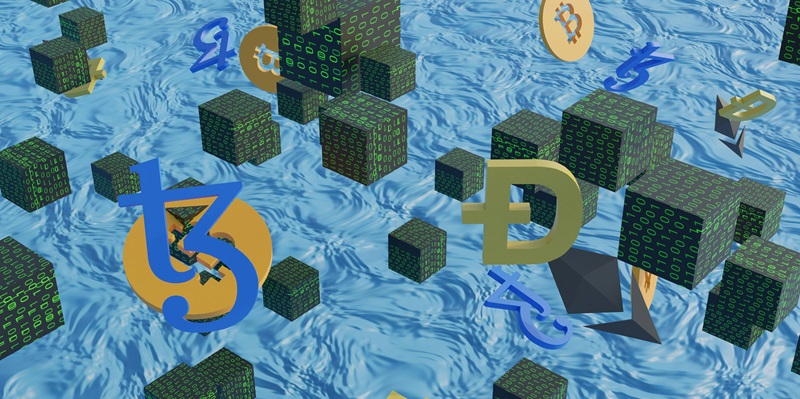In recent weeks, the XRP Ledger Automated Market Maker (AMM) protocol developed by Ripple Labs has experienced a transformative surge in transaction volumes, significantly impacting the decentralized trading landscape. This impressive increase in activity has stirred the cryptocurrency community, with experts pinpointing the unique qualities of XRPL AMM that facilitate decentralized, permissionless trading and offer new liquidity opportunities. Within a short period, daily transaction volumes on XRPL have spiked by 40%, a clear indicator of growing engagement and adoption of this protocol. Blockchain Backer and other industry analysts have highlighted how XRPL AMM’s design allows users to provide liquidity for various assets on the network, thus promoting a more inclusive and adaptable trading environment.
As decentralization gains traction, the ripple effect on the entire ecosystem becomes apparent. Reports from CryptoQuant reveal that the decentralized exchange (DEX) volume on XRPL surged by 17.6% over the past month, driven largely by the enhanced functionalities of the AMM protocol. Additionally, AMM Deposit activities have seen a significant jump of 62.35%, further reinforcing the role of AMM in fostering liquidity. The AMMCreate metric has also shown a substantial rise of 143.10%, indicating increased user contributions to the liquidity pools. This pronounced activity underscores the growing confidence and active participation within the XRPL ecosystem, buoyed by the user-friendly and efficient design of the AMM.
Surge in Transaction Volumes and Broader Implications
The surge in XRPL AMM transaction volumes is indicative of broader engagement trends within the ecosystem, shedding light on the evolving dynamics of user interaction on the platform. As XRPL’s AMM continues to support decentralized, permissionless trading, it is facilitating a shift among users from traditional payment methods to more innovative trading strategies backed by liquidity pools. The notable increase in DEX volume and AMM Deposit activities aligns with broader trends in the decentralized finance (DeFi) space, where users are increasingly drawn to platforms that offer high-yield-earning opportunities. Users seeking decentralized alternatives to centralized exchanges find XRPL’s AMM particularly attractive, due to its robust support for various assets and trading strategies.
Moreover, governance engagement within the XRPL ecosystem has also seen a notable uptick, reflecting a more active and participative user base. The AMMVote activity has increased by 65.22%, highlighting the growing importance of community involvement and decision-making in the XRPL’s development. This increase in governance-related activities suggests that users are becoming more invested in the future direction of the protocol, contributing to a more dynamic and responsive ecosystem. Additionally, total transaction volumes and payments on XRPL have shown steep declines, indicating a discernible shift in platform interaction. Users seem to be prioritizing decentralized trading and liquidity provision over traditional payment methods, a trend that is likely to continue as more users recognize the benefits and opportunities provided by the AMM protocol.
The Advantage of XRPL AMM in Decentralized Trading
The design and functionality of XRPL AMM provide a distinct advantage in the decentralized trading landscape. By supporting decentralized, permissionless trading, XRPL AMM allows users to bypass traditional intermediaries and engage directly in transactions, which can result in lower costs and more efficient trading. The ability to provide liquidity for a variety of assets on the network also enhances the versatility and appeal of XRPL AMM, attracting a diverse range of users looking for inclusive trading solutions. This protocol not only democratizes access to trading but also ensures that users have the tools and opportunities to maximize their returns through liquidity pools and high-yield strategies.
The rise in AMM-related activities indicates that users are keen on exploring these decentralized alternatives. The jump in AMMCreate and AMM Deposit metrics signifies a trend where users are actively contributing to and benefitting from the liquidity pools. This increased participation helps stabilize the ecosystem and provides a robust foundation for future growth. Additionally, the forthcoming release of the RLUSD stablecoin, currently in the private beta phase, adds to the positive outlook for XRPL. Multiple mints and burns of the stablecoin indicate preparation for a public launch, which could further enhance the platform’s capabilities and attract more users interested in stable and secure digital assets.
Future Prospects and Innovation
Recently, Ripple Labs’ XRP Ledger Automated Market Maker (AMM) protocol has revolutionized transaction volumes, profoundly affecting decentralized trading. The spike in activity has intrigued the cryptocurrency community, with experts highlighting XRPL AMM’s distinct features that enable decentralized, permissionless trading and create new liquidity opportunities. Daily transaction volumes on XRPL have surged by 40%, showcasing increased engagement and adoption of the protocol. Analysts, including Blockchain Backer, emphasize how XRPL AMM’s design lets users provide liquidity for various assets, fostering a more inclusive trading environment.
As decentralization advances, its ecosystem-wide impact becomes clear. Reports from CryptoQuant indicate that XRPL’s decentralized exchange (DEX) volume climbed by 17.6% in the past month, largely due to the AMM protocol’s enhanced capabilities. Furthermore, AMM Deposit activities skyrocketed by 62.35%, underscoring AMM’s crucial role in liquidity. The AMMCreate metric soared by 143.10%, reflecting greater user contributions to liquidity pools. This surge of activity highlights the growing confidence and participation within the XRPL ecosystem, driven by the AMM’s user-friendly and efficient design.

